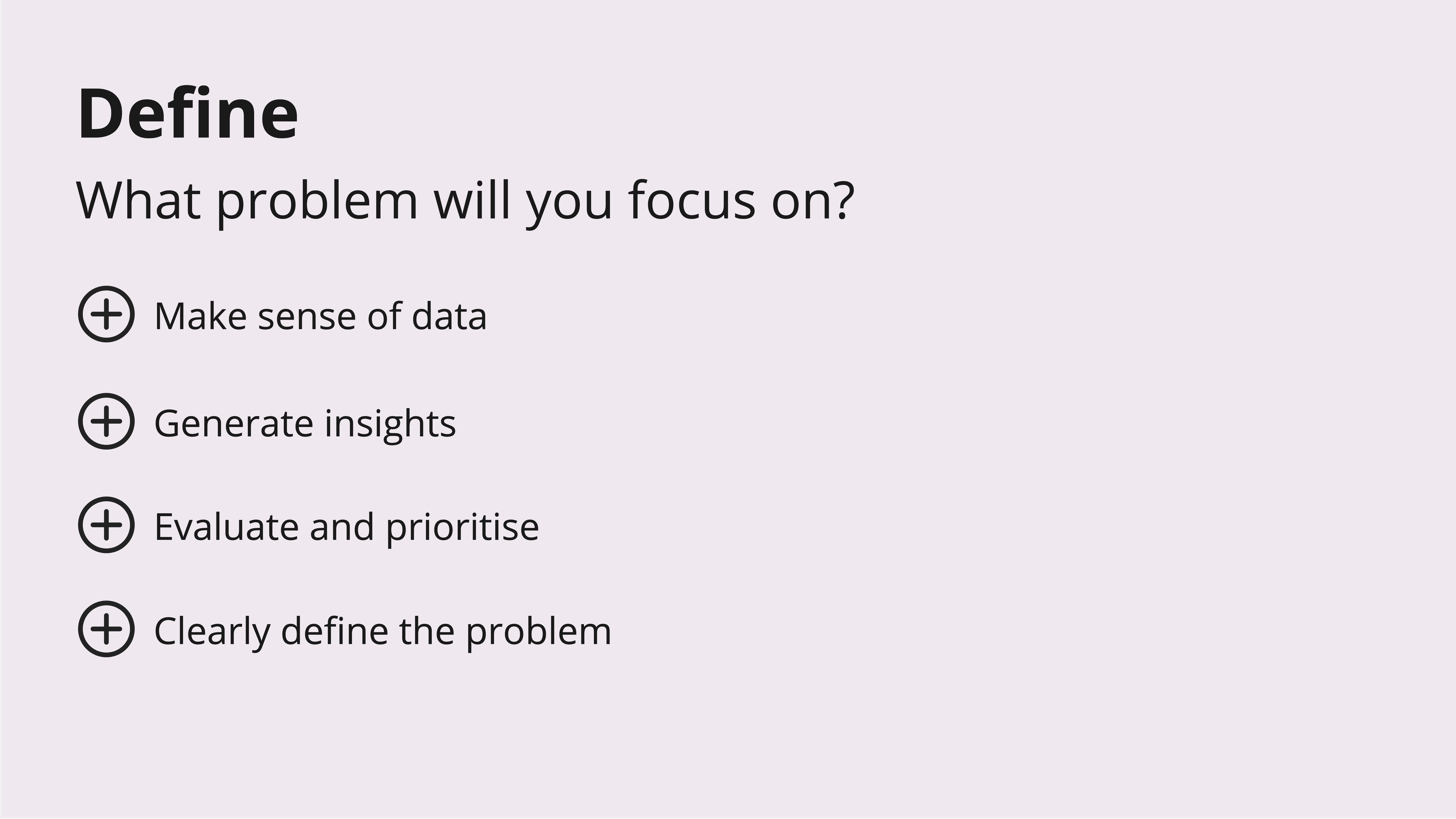What problem will you focus on?
Sort the data and look for meaningful findings/messages that deepen your understanding of the challenge to help you clearly state the problem to focus on.

Make sense of the data
Organise and make sense of the data gathered during Discover by identifying the key messages. Involve service users, staff and others who can give a considered critique to sense check your understanding of the data.
- How will you share the data with those you are involving? Consider how they might want to access/use it, and also any data governance issues identified in your research plan.
- Is there other existing data that should also be included at this stage?
- What are the common themes and sub-themes emerging from the data?
- Are there any gaps in the data that need to be explored?
- Are different stakeholder perspectives revealed by the data?
- Have you explored the needs of non-typical users to widen your perspective?
- Is the team in agreement with the findings?
Generate insights
Use the key findings from the data combined with what is known about the wider context for the challenge to deepen your understanding. What new and compelling findings and unmet needs can you identify?
- What existing data or information can broaden understanding of the challenge?
- What problems, needs or opportunities do the data reveal that you can respond to?
- Do your insights reflect the needs of end users?
- Do your insights reflect the needs of internal and external stakeholders?
- Can the findings be presented in a visual format to ease understanding?
- Is the process of reaching insights clearly presented for others to review, reference or access in the future?
- Have you sense checked the findings with an advisory group including service users and colleagues?
Evaluate and prioritise
Identify what success looks like for service users, key stakeholders and the organisation to make an informed decision about what particular problem to focus on. Understand user needs and the parameters to work within.
- What are the desired outcomes for service users?
- What are the desired outcomes for other key stakeholders? These might include families and carers, people delivering or contributing to the service or policy makers.
- What are the desired outcomes for the organisation?
- What measures can be used to monitor success?
- How might success be visually represented?
- How will multiple opportunities to create or enhance the service be prioritised?
- What parameters or requirements must you keep to?
What specific problem/s will you take forward?
Clearly define the problem
Clearly state the problem or opportunity identified to create the best possible starting point before looking at solutions. The problem statement or design brief must be informed by user perspectives and capture the essence of the issue or opportunity to explore.
- What problem/s will you focus on and why is it important?
- Are there specific service users and stakeholders who will be prioritised?
- Who will benefit from solving this problem/s?
- How will they benefit?
- Have you defined the unmet needs for service users?
- Have you defined the pain points and moments of delight for the existing service?
- Have you created How Might We... statements to capture the essence of what you want to do, for whom and why and in preparation for finding solutions?
